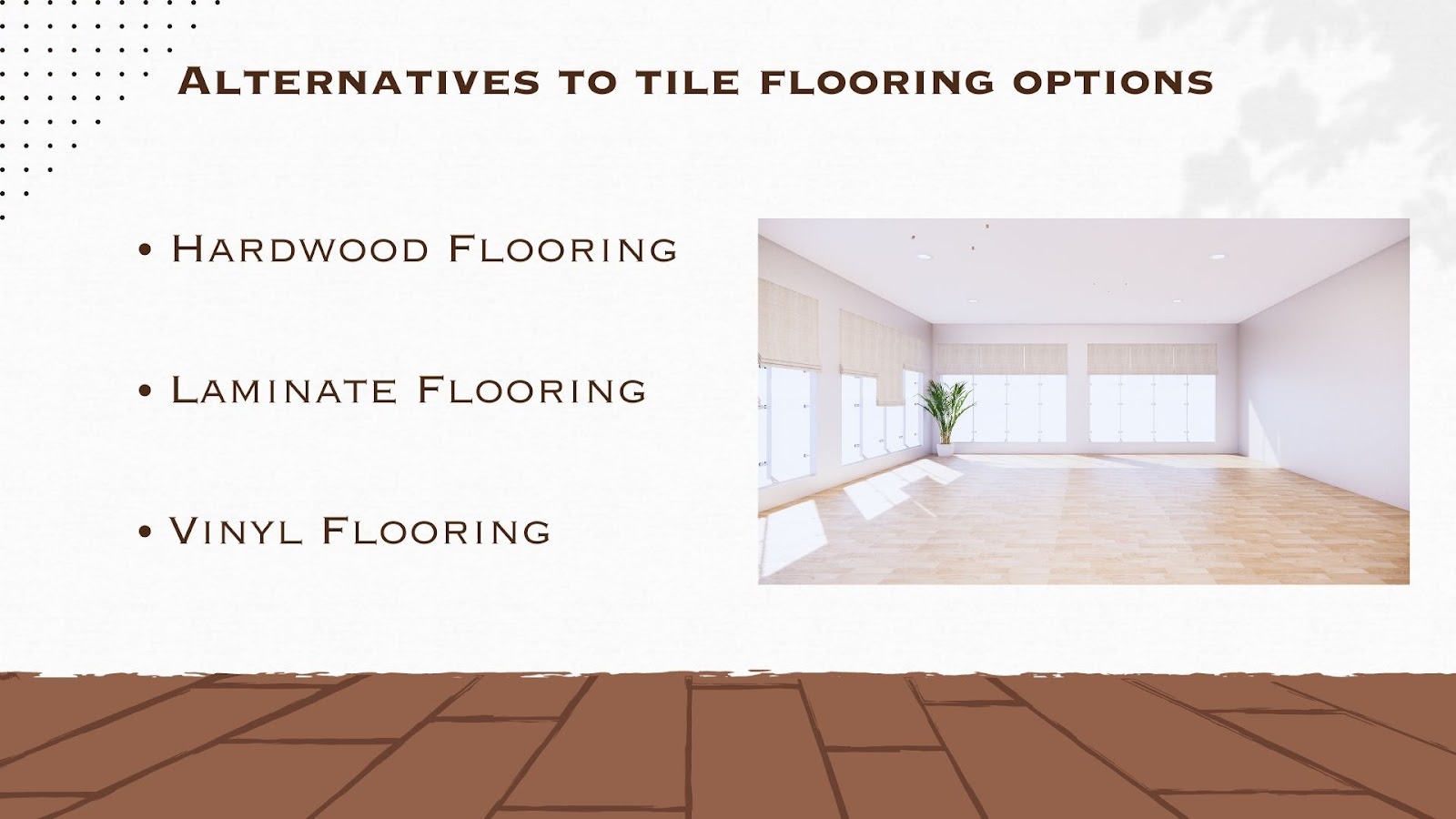Flooring is the largest surface, and finding the best flooring for your lifestyle, budget, and taste is significant. Numerous flooring options are available, including floor tiles (especially peel-and-stick tiles), hardwood, engineered material, vinyl flooring, carpets, etc. Each type is unique, so let’s learn about the most popular flooring materials and their best and weakest attributes.
- Floor Tiles
Floor tiles are typically the most popular choice for most house owners. You can find the perfect one for your home as they come in different colours, shapes, and sizes. Tiles are often made of highly durable and robust materials like porcelain, ceramic, and natural stones.
The material that makes them resilient enough to withstand heavy foot traffic is long-lasting. They are suitable for every section of your home, including entryways, bathrooms, and kitchens. Above all, if the tile is cracked or damaged, it can be easily replaced without replacing the entire flooring.
The Convenient Alternatives – Peel and Stick Tiles
Peel-and-stick tiles have gained immense popularity recently because they are easy to install and more versatile than traditional flooring tiles. These are precisely what they sound like – they have an adhesive backing that can be placed anywhere on walls, floors, and backsplashes.
Like traditional floor tiles, these tiles are great DIY options and are available in various materials such as metal, glass, and wood. These are the best options for rentals as they can be detached from the floor and moved to other places saving the cost of buying new tiles.
Pros
- They are highly suitable for high-traffic areas and are known for their strength and resilience.
- Require minimal maintenance and are so easy to clean, making them fresh and shiny with regular sweeping and mopping.
- These are the healthiest options for people with allergies as they do not harbor allergens like pet dander, pollen, and dust mites compared to carpets.
- Peel and stick tiles save time and effort as they can be easily applied to any surface.
- They come in various designs, such as peel-and-stick wall tile, luxury peel-and-stick backsplash, and more customizable options.
- Tiles are water-tight, which makes them an excellent choice for bathrooms and laundry.
Cons
- While peel-and-stick tile options are easy to install, others require the precision and skills of a professional for a flawless finish.
- Although flooring tiles are robust, they are still vulnerable to cracks if heavy objects drop on them.
- They may feel cold or hot and may be slippery.
- Hardwood Flooring
Solid wood flooring, or hardwood flooring, is mainly made from solid pieces of milled hardwood from plant species such as cherry, oak, walnut, and maple. Its installation requires professional skills in nailing the wooden planks to the subfloor. Since it’s made of solid wood, it can easily be refinished and sanded to maintain its appearance.
Pros
- Hardwood flooring provides a warm natural aesthetic and enhances the floor’s elegance.
- These floors are a long time investment as they can last for decades and even centuries.
- It significantly increases the sale value of a property.
Cons
- This flooring option is more expensive than tiles due to its precise installation and costly material.
- As wood is sensitive to moisture, it can swell or warp if it gets wet or if the environment is humid.
- This flooring is highly susceptible to dents and scratches from sharp objects.
- Laminate Flooring
This multilayer synthetic product typically includes a high-density fiberboard (HDF) base for added protection and insulation, a photographic layer that resembles wood, and a top protective layer. These tiles are a popular way to achieve the appearance of stone or wood floors at a fraction of the cost.
Pros
- It’s a cost-effective choice as compared to tiles or hardwood.
- These tiles are a perfect choice for DIY enthusiasts as they are designed with a click-and-lock installation .
- Available in many styles and colours.
Cons
- These floorings can lead to planks buckling, staining, and breaking down due to oversaturation of any liquid.
- Not as long-lasting as tiles
- They cannot be repaired once worn out or damaged due to their wear layer and composite construction; they ultimately need to be replaced.
- Vinyl Flooring
Vinyl flooring is synthetic tiles made from polyvinyl chloride plastic or PVC. They are available in multiple colours and textures.
Pros
- Cheaper than all flooring options available
- They are available in countless designs
- Can endure more wear and tear than other flooring materials
Cons
- Its adhesives stick hard against the floor and might become difficult to remove.
- The PVC emits volatile organic compounds (VOCs), which can contribute to indoor air pollution.
- It may reduce the resale value of a home compared to more premium flooring options.
A Brief Comparison of Different Flooring Options
| Flooring Options | Floor Tiles | Hardwood | Laminate | Vinyl |
| Durability | High | High | Moderate | Moderate |
| Maintenance | Easy | Moderate | Easy | Easy |
| Water Resistance | Varies | Moderate | Low | High |
| Variety of Styles | High | High | High | High |
| Installation Difficulty | Moderate | Moderate | Easy | Easy |
| Price Range | Moderate | High | Low | Low |
| Lifespan | Long | Long | Moderate | Moderate |
Final Verdict – Making the Right Choice
As discussed above, we’ve explored various flooring options with their pros and cons. However, you must make the right choice based on your needs and preferences, considering the following factors:
- Household traffic
- Your Budget
- Installation process
- Durability
- Maintenance, and much more.
Now armed with this comprehensive guide, you can find the perfect flooring and make informed decisions based on your needs, aesthetic sense, longevity, and functionality. Happy Flooring!

